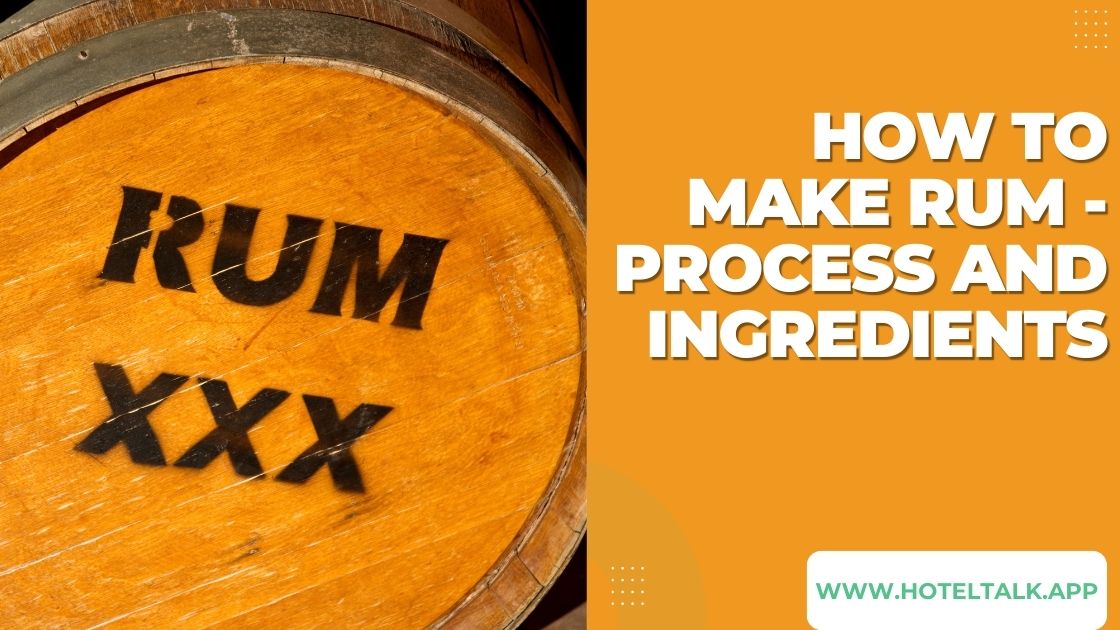Definition of RUM
The word rum originates from the Latin word ‘Saccarum’ meaning sugar or sweetness. It is produced from molasses, which is a by-product obtained during the sugar making process. Originally rum was made from cane juice, but as the demands for sugar increased, the sugar producers in creased their demands for sugar cane juice. Molasses is sticky syrup that still contains a significant amount of sugar. Sugar mill operators soon noticed that when it was mixed with water and left out in the sun it would ferment, which led to the use of molasses for the production of sugar.
PRODUCTION OF RUM
- Molasses is mixed with water to dilute it and make it easier to handle.
- Yeast is added and the molasses is allowed to ferment.
- The duration of fermentation varies according to style of rum being produced.
- Normally for producing light rums and gold rums, the molasses is allowed to ferment for a maximum for 4 days. For producing dark rums, the molasses is fermented for 5 to 20 days.
- After the fermentation the wash is distilled, which again differs according to the style of rum being produced.
- White rums undergo a single distillation in the patent still to yield a spirit having 91% alcohol by volume.
- Dark rums undergo double distillation in the pot still to yield a spirit having 86% alcohol by volume.
- White rums are matured in uncharred oak casks for a period not less than 1 year.
- Gold rums are also matured in uncharred oak casks for a period not less than 3 years. They may be coloured by the addition of a small amount caramel.
- Dark rums on the other hand are matured in charred oak casks for a period of at least 5 to 7 years. They obtain their colour from the oak casks and are coloured further by the addition of caramel, which also gives the end product a little sweetness.
- The rums are blended, usually only dark rums are blended.
- The end products are reduced to a strength of 40% alcohol by volume by the addition of pure distilled water and bottled.
- White Rums are primarily used as mixers and blend particularly well with fruit flavors.
- Golden Rums, also known as Amber Rums, are generally medium-bodied. Most have spent several years aging in oak casks, which give them smooth, mellow palates.
- Dark Rums are traditionally full-bodied, rich, caramel-dominated Rums. The best are produced mostly from pot stills and frequently aged in oak casks for extended periods. These Rums are consumed straight up.
POPULAR BRANDS:
Dark Rums: Appleton, Rhum St. James, Captain Morgan
White Rums: Bacardi, Ron Rico, Rhum, Rhum St. James
Gold Rums: Mount Gay, Appleton, Myer’s
RUM REGIONS
- The Caribbean is the epicenter of world rum production. Virtually every major island group produces its own distinct rum style.
- Barbados: produces light, sweetish rums from both pot and column stills. Rum distillation began here and the Mount Gay Distillery, dating from 1663, is probably the oldest operating rum producer in the world.
- Cuba: produces light-bodied, crisp, clean rums from column stills. It is currently illegal to ship Cuban Rums into the United States.
- The Dominican Republic: is notable for its full-bodied, aged rums from column stills.
- Guyana: is famous for its rich, heavy Demerara Rums, named for a local river, which are produced from both pot and column stills. Demerara Rums can be aged for extended periods (25-year-old varieties are on the market) and are frequently used for blending with lighter rums from other regions.
- Haiti: follows the French tradition of heavier rums that are double-distilled in pot stills and aged in oak casks for three or more years to produce full-flavored, exceptionally smooth- tasting rums.
- Jamaica is well known for its rich, aromatic rums, most of which are produced in pot stills. Jamaica has official classifications of rum, ranging from light to very full-flavored. Jamaican Rums are extensively used for blending.
- Martinique: is a French island with the largest number of distilleries in the Eastern Caribbean. Both pot and column stills are used. As on other French islands such as Guadeloupe, both rum made from sugar cane juice and rum made from molasses are produced. These rums are aged for a minimum of three years.
- Puerto Rico: is known primarily for light, very dry rums from column stills. All white Puerto Rican rums must, by law, be aged a minimum of one year while dark rums must be aged three years. Bacardi is the world’s most popular white Puerto Rican rum.
- Trinidad: produces mainly light rums from column stills and has an extensive export trade.
- The Virgin Islands: produce light, mixing rums from column stills.
- Guatemala & Nicaragua: are noteworthy in Central America where a variety of, primarily, medium-bodied rums from column stills are produced. They have recently begun to gain international recognition
- Brazil: produces vast quantities of mostly light Rums from column stills.
- Venezuela: makes a number of well-respected barrel-aged golden and dark rums.
- The United States: have a handful of rum distilleries in the south, producing a range of light and medium-bodied rums.
By Vishal Gaikwad.
